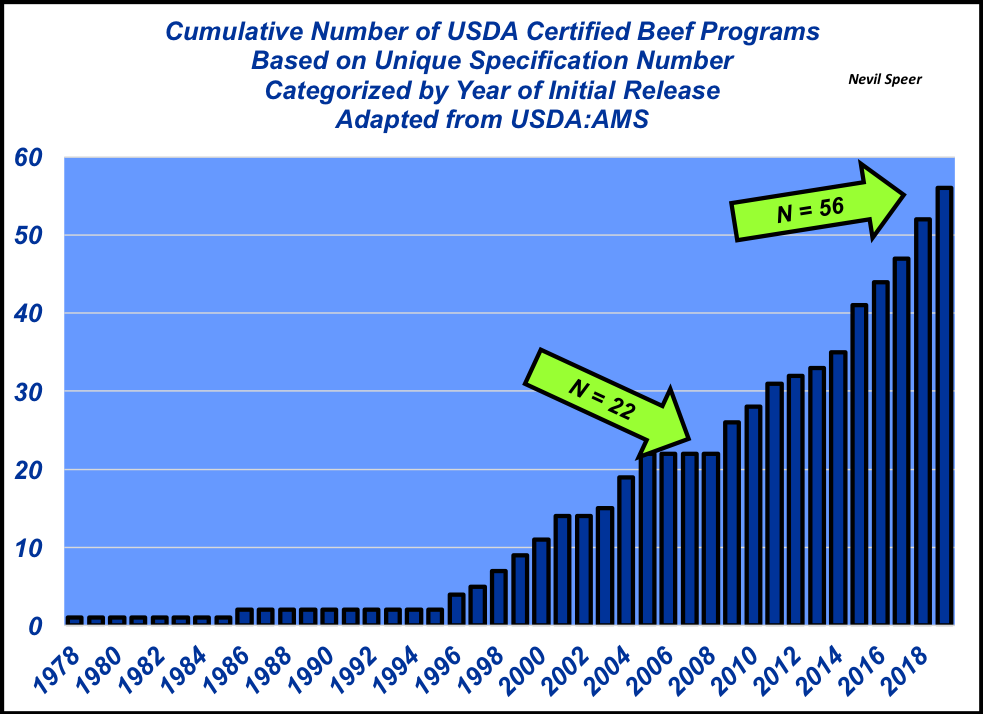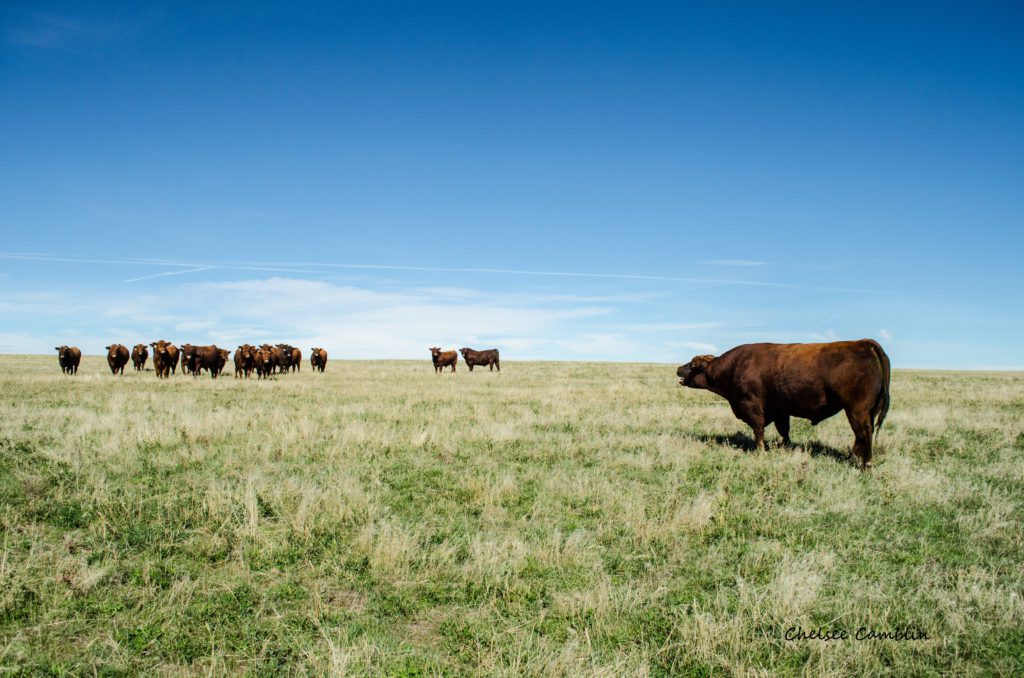Programs that specify beef quality are de-commoditizing how cattle are bred, fed and sold.
The beef industry is changing! There are any number of indicators out there that point to the shifting business environment. However, one of the most significant markers of that change revolves around the growing number of USDA certified beef programs.
Undoubtedly, the one receiving the most attention of late being G-112: The specification number assigned to the 44 Farms Premium Natural Black Angus program. The program was established to source Walmart with beef for the company’s new focus on meat and produce (“fresh”) – a strategy designed to help drive sales and store yield. That aside, there’s been huge growth in the number of branded programs across the beef industry over the past decade.
As review, Certified Angus Beef (CAB) was initiated in 1978 and holds the distinction as the first USDA certified beef program. And it stood alone until Chef’s Exclusive was added in 1986. It then required another 10 years before the industry introduced any new programs. Certified Hereford Beef and Black Canyon Angus Beef Premium Reserve were both established in 1996.
From that point things picked up rather quickly with the industry adding 18 new programs over the course of the next nine years. However, the trend plateaued and at the end of 2008; there were 22 programs in existence.
The growth from there, though, has been nothing short of remarkable – the beef industry has added at least one new program every year since that time. The cumulative growth has resulted in 34 new programs during the past 11 years.
The trend has huge implications for the beef industry going forward. It increasingly points towards focused supply chains that require specified genetics and/or management to qualify for a respective program. And it’s all in an effort to de-commoditize the product and establish value creation through differentiation.
Nevil Speer is based in Bowling Green, Ky. and serves as director of industry relations for Where Food Comes From (WFCF). The views and opinions expressed herein do not necessarily reflect those of WFCF or its shareholders. He can be reached at nspeer@wherefoodcomesfrom.com. The opinions of the author are not necessarily those of beefmagazine.com or Farm Progress.








